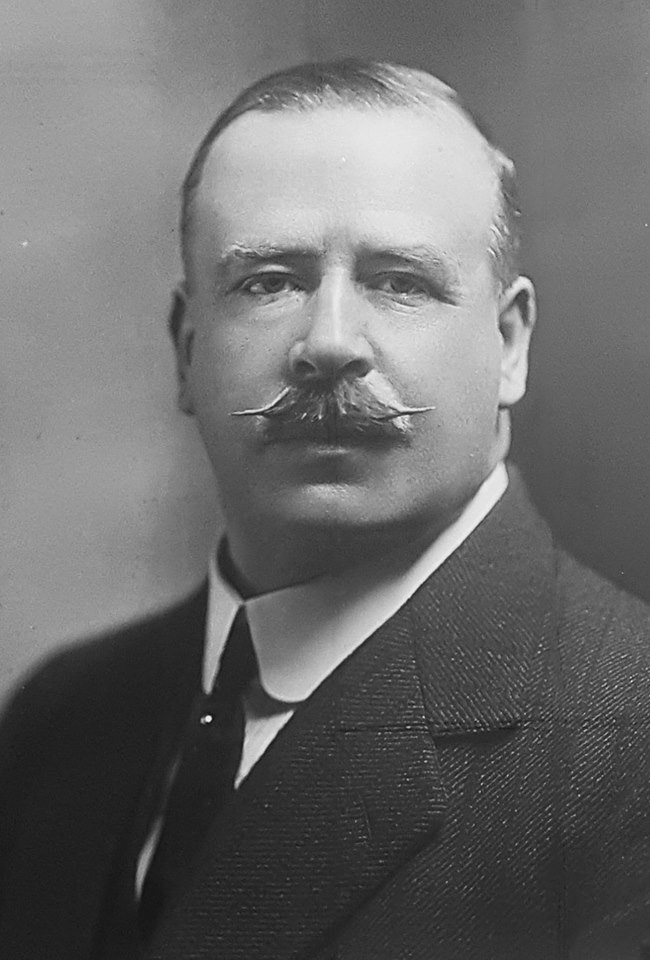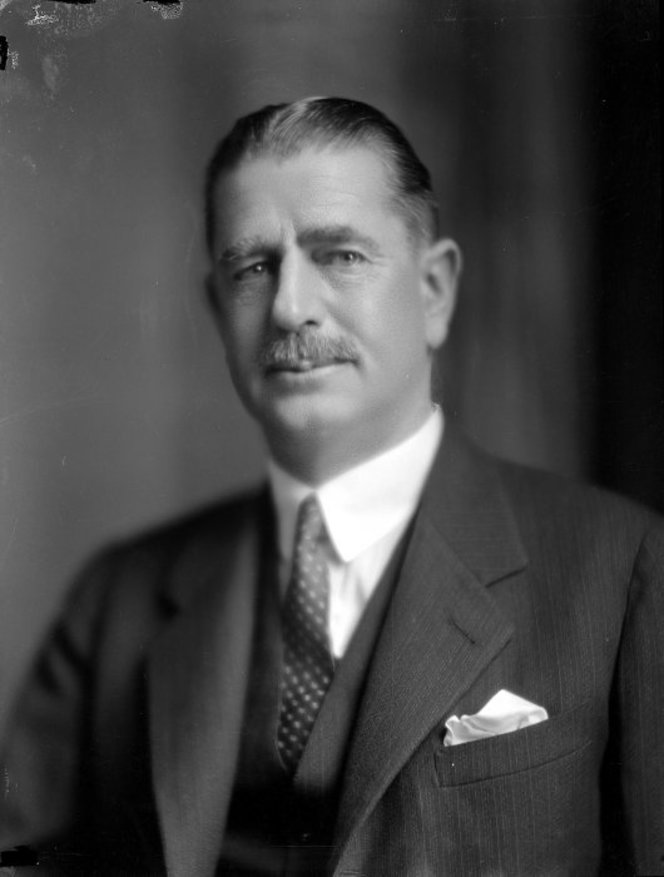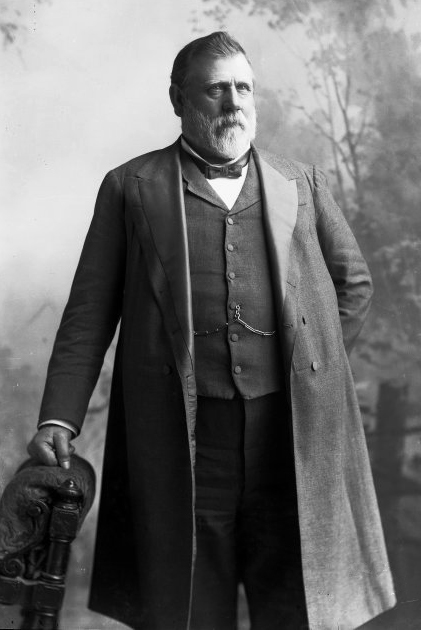|
1935 New Zealand General Election
The 1935 New Zealand general election was a nationwide vote to determine the shape of the New Zealand Parliament's 25th term. It resulted in the Labour Party's first electoral victory, with Michael Joseph Savage becoming the first Labour Prime Minister after defeating the governing coalition, consisting of the United Party and the Reform Party, in a landslide. The governing coalition lost 31 seats, which was attributed by many to their handling of the Great Depression: the year after the election, the United and Reform parties merged to form the modern National Party. The election was originally scheduled to be held in 1934, in keeping with the country's three-year election cycle, but the governing coalition postponed the election by one year hoping that the economic conditions would improve by 1935. Background Since 1931, New Zealand had been governed by a coalition of the United Party and the Reform Party, the United–Reform Coalition. United and Reform had tradition ... [...More Info...] [...Related Items...] OR: [Wikipedia] [Google] [Baidu] |
New Zealand Parliament
The New Zealand Parliament ( mi, Pāremata Aotearoa) is the unicameral legislature of New Zealand, consisting of the King of New Zealand ( King-in-Parliament) and the New Zealand House of Representatives. The King is usually represented by his governor-general. Before 1951, there was an upper chamber, the New Zealand Legislative Council. The New Zealand Parliament was established in 1854 and is one of the oldest continuously functioning legislatures in the world. It has met in Wellington, the capital of New Zealand, since 1865. The House of Representatives normally consists of 120 members of Parliament (MPs), though sometimes more due to overhang seats. There are 72 MPs elected directly in electorates while the remainder of seats are assigned to list MPs based on each party's share of the total party vote. Māori were represented in Parliament from 1867, and in 1893 women gained the vote. Although elections can be called early, each three years Parliament is dissolved and ... [...More Info...] [...Related Items...] OR: [Wikipedia] [Google] [Baidu] |
United Party (New Zealand)
The United Party of New Zealand, a party formed out of the remnants of the Liberal Party, formed a government between 1928 and 1935, and in 1936 merged with the Reform Party to establish the National Party. Foundation In the 1920s the Liberal Party, although previously dominant in New Zealand party politics, seemed in serious long-term decline following the advent of the Labour Party, and its organisation had decayed to the point of collapse. The United Party represented an unexpected resurgence of the Liberals, and some historians consider it nothing more than the Liberal Party under a new name. The United Party emerged from a faction of the decaying Liberal Party known as "the National Party" (not directly related to the modern National Party, although it may have inspired the name). George Forbes, a Liberal Party leader, led the faction. In 1927 Forbes joined with Bill Veitch (who led another faction of the Liberals, but who had once been involved with the labour movem ... [...More Info...] [...Related Items...] OR: [Wikipedia] [Google] [Baidu] |
Māori Electorates
In New Zealand politics, Māori electorates, colloquially known as the Māori seats, are a special category of electorate that give reserved positions to representatives of Māori in the New Zealand Parliament. Every area in New Zealand is covered by both a general and a Māori electorate; as of 2020, there are seven Māori electorates. Since 1967, candidates in Māori electorates have not needed to be Māori themselves, but to register as a voter in the Māori electorates people need to declare that they are of Māori descent. The Māori electorates were introduced in 1867 under the Maori Representation Act. They were created in order to give Māori a more direct say in parliament. The first Māori elections were held in the following year during the term of the 4th New Zealand Parliament. The electorates were intended as a temporary measure lasting five years but were extended in 1872 and made permanent in 1876. Despite numerous attempts to dismantle Māori electorates, t ... [...More Info...] [...Related Items...] OR: [Wikipedia] [Google] [Baidu] |
New Zealand Post Office
The New Zealand Post Office (NZPO) was a government department of New Zealand until 1987. It was previously (from 1881 to 1959) named the New Zealand Post and Telegraph Department (NZ P&T). As a government department, the New Zealand Post Office had as its political head the Postmaster General, who was a member of Cabinet, and, when it was a separate department, the Minister of Telegraphs. The NZPO was similar to the British Post Office or ''GPO'', and so was similar to European ''PTT'' or postal, telegraph and telephone services, which were government monopolies. History 19th century Official postal services started in New Zealand after Captain William Hobson arrived in the Bay of Islands and took up his role as Lieutenant-Governor. Hobson appointed William Clayton Hayes as Clerk to the Bench of Magistrates and Postmaster and the first official post office was opened at Kororareka, now called Russell. Hayes holds the distinction of being New Zealand's first civil servant to ... [...More Info...] [...Related Items...] OR: [Wikipedia] [Google] [Baidu] |
Colin Scrimgeour
The Reverend Colin Graham Scrimgeour (30 January 1903 – 16 January 1987), also known as Uncle Scrim or Scrim, was a New Zealand Methodist Minister and broadcaster. Biography Life and ministry Born in Wairoa, Hawke's Bay, he entered the Methodist Ministry in 1923 and concentrated on social work. He was Auckland Methodist City Missioner for six years. After broadcasting from Radio Station 1ZR – run by the firm of Lewis Eady – he established the Friendly Road Broadcasting Station 1ZB in 1933, associated with the Friendly Road church (Aunt Daisy broadcast on these stations, and they supported the Labour Party). Shortly before the 1935 election on Sunday 24 November, an address by Uncle Scrim which was expected to urge listeners to vote Labour was jammed by the Post Office. The minister in charge of the P&T Department, Adam Hamilton, was blamed, although he denied responsibility. As a close friend of Michael Joseph Savage and John A. Lee of the First Labour Government whic ... [...More Info...] [...Related Items...] OR: [Wikipedia] [Google] [Baidu] |
The Dominion Post (Wellington)
''The Dominion Post'' is a metropolitan daily newspaper published in Wellington, New Zealand. It is owned by media business Stuff Ltd, formerly the New Zealand branch of Australian media company Fairfax Media. Weekday issues are now in tabloid format, and its Saturday edition is in broadsheet format. Since 2020 the editor has been Anna Fifield. History ''The Dominion Post'' was created in July 2002 when Independent Newspapers Limited (INL) amalgamated two Wellington printed and published metropolitan broadsheet newspapers, '' The Evening Post'', an evening paper first published on 8 February 1865, and '' The Dominion'', a morning paper first published on Dominion Day, 26 September 1907. ''The Dominion'' was distributed throughout the lower half of the North Island, as far as Taupo, where it met with Auckland's ambitiously named ''The New Zealand Herald''. ''The Evening Post'' was not so widely distributed, but had a much greater circulation than ''The Dominion''. INL sold ... [...More Info...] [...Related Items...] OR: [Wikipedia] [Google] [Baidu] |
The Dominion (Wellington)
''The Dominion'' was a broadsheet metropolitan morning daily newspaper published in Wellington, New Zealand, from 1907 to 2002. It was first published on 26 September 1907, the day New Zealand achieved Dominion status. It merged with '' The Evening Post'', Wellington's afternoon daily newspaper, to form '' The Dominion Post'' in 2002. ''The Dominion'' was founded by Wellington Publishing Company Limited, a public listed company formed for the purpose twelve months earlier by a group of businessmen, rather than newspapermen, "in the Opposition and freehold interests". The existing Wellington morning newspaper ''The New Zealand Times'' had a Liberal Party heritage and the big pastoral landowners lacked a voice in the new dominion's capital and its hinterland provinces. Accordingly, ''The Dominions circulation was always soundest outside Greater Wellington, where the long-established and politically neutral ''Evening Post'' always dominated. Early printing and special services deli ... [...More Info...] [...Related Items...] OR: [Wikipedia] [Google] [Baidu] |
1931 New Zealand General Election
The 1931 New Zealand general election was a nationwide vote to determine the shape of the New Zealand Parliament's 24th New Zealand Parliament, 24th term. It resulted in the United–Reform Coalition, newly formed coalition between the United Party (New Zealand), United Party and the Reform Party (New Zealand), Reform Party remaining in office as the United–Reform coalition Government of New Zealand, United–Reform Coalition Government, although the opposition New Zealand Labour Party, Labour Party made some minor gains despite tallying more votes than any other single party. Background In the 1928 New Zealand general election, 1928 election, the Reform Party (New Zealand), Reform Party won 28 seats to the United Party (New Zealand), United Party's 27 seats. Shortly after the election the Reform Party lost a vote of no-confidence and the United Party managed to form a government, the United Government of New Zealand, United Government, with the support of the New Zealand Labour ... [...More Info...] [...Related Items...] OR: [Wikipedia] [Google] [Baidu] |
Socialism
Socialism is a left-wing economic philosophy and movement encompassing a range of economic systems characterized by the dominance of social ownership of the means of production as opposed to private ownership. As a term, it describes the economic, political and social theories and movements associated with the implementation of such systems. Social ownership can be state/public, community, collective, cooperative, or employee. While no single definition encapsulates the many types of socialism, social ownership is the one common element. Different types of socialism vary based on the role of markets and planning in resource allocation, on the structure of management in organizations, and from below or from above approaches, with some socialists favouring a party, state, or technocratic-driven approach. Socialists disagree on whether government, particularly existing government, is the correct vehicle for change. Socialist systems are divided into non-market and market f ... [...More Info...] [...Related Items...] OR: [Wikipedia] [Google] [Baidu] |
1928 New Zealand General Election
The 1928 New Zealand general election was held on 13 and 14 November in the Māori and European electorates, respectively, to elect 80 MPs to the 23rd session of the New Zealand Parliament. 1928 was the year postal voting was introduced for certain specified groups (e.g. invalids) who could not get to a polling booth on election day. The election The 1928 election was held on Tuesday, 13 November in the Māori electorates, and on Wednesday, 14 November in the general electorates to elect a total of 80 MPs to the 23rd session of Parliament. A total of 844,633 electors were registered on the European roll, of which 743,691 (88.05%) turned out to vote. All 80 electorates were contested. 47 and 29 electorates were in the North Island and South Island, respectively, plus the 4 Māori electorates. In 1927, a faction of the decaying Liberal Party formed a new organisation, which was eventually named the United Party. In 1928, to the considerable surprise of most observers and many m ... [...More Info...] [...Related Items...] OR: [Wikipedia] [Google] [Baidu] |
New Zealand Liberal Party
The New Zealand Liberal Party was the first organised political party in New Zealand. It governed from 1891 until 1912. The Liberal strategy was to create a large class of small land-owning farmers who supported Liberal ideals, by buying large tracts of Māori land and selling it to small farmers on credit. The Liberal Government also established the basis of the later welfare state, with old age pensions, developed a system for settling industrial disputes, which was accepted by both employers and trade unions. In 1893 it extended voting rights to women, making New Zealand the first country in the world to enact universal adult suffrage. New Zealand gained international attention for the Liberal reforms, especially how the state regulated labour relations. It was innovating in the areas of maximum hour regulations and compulsory arbitration procedures. Under the Liberal administration the country also became the first to implement a minimum wage and to give women the right ... [...More Info...] [...Related Items...] OR: [Wikipedia] [Google] [Baidu] |
History Of New Zealand
The history of New Zealand ( Aotearoa) dates back to between 1320 and 1350 CE, when the main settlement period started, after it was discovered and settled by Polynesians, who developed a distinct Māori culture. Like other Pacific cultures, Māori society was centred on kinship links and connection with the land but, unlike them, it was adapted to a cool, temperate environment rather than a warm, tropical one. The first European explorer known to visit New Zealand was Dutch navigator Abel Tasman on 13 December 1642. In 1643 he charted the west coast of the North Island, his expedition then sailed back to Batavia without setting foot on New Zealand soil. British explorer James Cook, who reached New Zealand in October 1769 on the first of his three voyages, was the first European to circumnavigate and map New Zealand. From the late 18th century, the country was regularly visited by explorers and other sailors, missionaries, traders and adventurers. In 1840 the Treaty of Waitangi ... [...More Info...] [...Related Items...] OR: [Wikipedia] [Google] [Baidu] |
.jpg)


.jpg)


.jpg)
.jpg)
